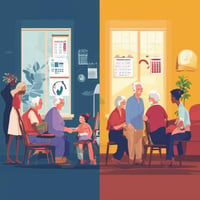When it comes to preparing for future healthcare needs, traditional long-term care (LTC) insurance...
🔥 Unlock Tax-Free Long-Term Care with Old Non-Qualified Annuities
Did you know that many retirees are sitting on idle annuity assets — and missing a massive tax-saving opportunity?
Thanks to the Pension Protection Act (PPA) of 2006, there’s a powerful solution to turn old non-qualified annuities into tax-free long-term care (LTC) coverage.
The Missed Opportunity in NQ Annuities
📊 According to LIMRA, over $2 trillion is currently held in non-qualified annuities, much of it untouched for years.
🔍 A separate industry report found that only 14% of annuity owners draw systematic income from their contracts. That means over 80% of these assets may just be sitting idle — exposed to tax and not working efficiently.
So, what if that dormant money could do something more?
Enter the Pension Protection Act
The PPA allows for tax-free withdrawals from non-qualified annuities if used to pay for qualified long-term care expenses — when structured properly through a PPA-compliant annuity.
Even better: by repositioning an old annuity, your client could multiply its LTC value while avoiding tax on the gain.
💡 Case in Point: Annuity Care II
OneAmerica’s Annuity Care II is a standout. It allows you to:
-
Reposition an old NQ annuity without triggering tax
-
Leverage the full account for LTC coverage, tax-free
-
Access benefits with no medical underwriting (on base benefits)
-
Provide joint coverage for spouses using one asset
Why Advisors Are Revisiting Old Contracts:
✅ Tax Advantage – Gains used for LTC are 100% tax-free
✅ Asset Efficiency – Turn idle funds into leverage (2–3x in LTC)
✅ No Underwriting Headaches – Ideal for older clients or impaired risk
✅ Solves a Real Problem – Over 70% of retirees over age 65 will need some form of long-term care¹
Don’t Walk Away from Old NQ Annuities — Reposition Them
If your clients own older annuities they’re unlikely to use for income, it’s time to talk. With the PPA strategy, you can help them protect their retirement, avoid taxes, and prepare for care — all with dollars they’re not even touching.
¹Source: U.S. Department of Health and Human Services
Stats: LIMRA Secure Retirement Institute; NAIC reports




